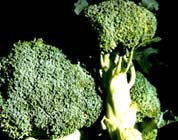When it comes to a bodybuilding diet, macro-nutrient intake of proteins, fats and carbohydrates are usually prioritized ahead of micro-nutrient (commonly known as vitamins and minerals) intake. It might be assumed that a sufficient level of vitamins and minerals, so crucial to anabolic processes, enzymatic and otherwise, can be obtained through a regular bodybuilding diet.
Research suggests otherwise. Studies have shown that vitamins used synergistically, and on their own, as part of the average persons diet can improve all manner of health problems (BASF. Human Nutrition, 2003). Bodybuilders, by the very nature of what they do, need to increase their intake of vitamins and minerals to help offset any catabolic effects of their training.
Vitamin and mineral research is a very complex area. Required intake varies from person to person and different vitamins and minerals perform different functions. This article, the first in a series, will focus specifically on the function of Vitamin A and its importance to bodybuilders.

What Exactly Is Vitamin A

Vitamin A is one vitamin often overlooked in favor of the "superstars' of the vitamin world: C, B and E. Vitamin A however, is extremely important, as will be shown throughout this article.
Vitamin A is a water insoluble vitamin meaning it is stored in the bodies fat cells as opposed to the more transient water soluble vitamins (B and C), which are flushed through the system and used along the way.
Vitamin A occurs naturally in two forms: preformed vitamin A (retinol) and carotene, also known as pro-vitamin A. Carotene is converted to vitamin A when we eat carotene containing foods (plant sources: fruits and vegetables that are yellow-orange or dark green). About 30% of these foods are converted into vitamin A in the intestinal wall.
On the other hand when one eats animal tissue (fish, liver and dairy products primarily), retinol is provided directly as the animal has already converted carotene to vitamin A. In the U.S., approximately 26% and 34% of vitamin A consumed by men and women is provided by pro-vitamin A carotenoids (NIH Clinical center, 2003).
Beta-carotene, distinguished from carotene by its higher bioavailability (most easily used), is of the carotenoid family of vitamin A precursors and can be obtained from yellow-orange and dark green vegetables also. Alpha-carotene and b-cryptoxanthin, other carotenoids, are also converted to vitamin A but not as efficiently as beta-carotene.

Why Bodybuilders Need Vitamin A

Because it aids the repair and growth of body tissues, vitamin A is crucially important to bodybuilders. Other important functions of vitamin A are the development of the reproductive system, skin and mucosal lining protection and eye sight integrity. Many bodybuilders probably have marginally low vitamin A intakes, due to their emphasis on other dietary factors.
Intense physical activity, however, disrupts the absorption of vitamin A and can exacerbate the already fragile state of the vitamin A levels bodybuilders might have. A low-fat intake can also affect vitamin A status. Vitamin A and carotene can be lost in the faeces of one who is on a low fat diet as with a low fat intake very little bile gets to the intestine, where it helps to ensure that vitamin A is retained and absorbed.
Vitamin A also helps regulate the immune system through helping lymphocytes, a type of white blood cell that fights infections, function more effectively.
Some carotenoids have also been shown to function as antioxidants to fight free-radical build-up and further aid the immune system.
Vitamin A promotes normal growth and development of the bones and teeth. It stimulates young cells to become mature, specialized cells that produce bone tissue and tooth enamel.
Vitamin a intake should not be compromised if one is serious about muscle building and overall health gains.
The following circumstances may jeopardize vitamin A status:
- Smoking
- Injury or illness
- Living in a polluted area
- Over-use of iron supplements
- Diabetes
- Pregnancy/lactation
- Heavy alcohol use
- Low-fat diet (as discussed)
Signs of vitamin A deficiency are:
- Dry, scaly skin
- Poor vision (especially at night time)
- Predisposition to infections (particularly lungs, alimentary canal and urinary tract

Sources Of Vitamin A

 The best sources of preformed vitamin A are the following animal products in descending order: beef liver, chicken liver, egg substitute, cheese pizza, whole milk, cheese and whole egg. Best sources of carotene, in descending order, are: carrots (ideally canned variety), cooked sweet potatoes, pumpkin, carrot juice, broccoli, spinach, apricots, kale, peppers, melon, butter, mangos, chicory, passion fruit juice, chard, cabbage, paprika, amaranth, and peas.
The best sources of preformed vitamin A are the following animal products in descending order: beef liver, chicken liver, egg substitute, cheese pizza, whole milk, cheese and whole egg. Best sources of carotene, in descending order, are: carrots (ideally canned variety), cooked sweet potatoes, pumpkin, carrot juice, broccoli, spinach, apricots, kale, peppers, melon, butter, mangos, chicory, passion fruit juice, chard, cabbage, paprika, amaranth, and peas.
The recommended USA dietary intake of vitamin A for male and female adults is 1000 and 800 micrograms per-day respectively. However, this depends largely on the type of vitamin A consumed. Retinol (preformed vitamin A) can be toxic in large doses.
Carotenoids (found in the aforementioned fruits and vegetables) on the other hand are converted to vitamin A in the body and can be consumed without fear of toxicity. Furthermore, bodybuilders can probably disregard the recommended daily allowances as they apply to the average adult human. Bodybuilders are far from average in terms of their energy output and consumption.

Vitamin A Over-Consumption?

Hypervitaminosis A, or high vitamin A storage levels in the body, can lead to liver abnormalities, birth defects and reduced bone mineral density that may lead to osteoporosis. Given that vitamin A is fat soluble, it is stored, but it is also used on a daily basis to help regulate tissue growth, among other things.
For hypervitaminosis A to occur, one would have to consume a large amount of vitamin A over a short period of time. This is unlikely to occur with food. Supplementation is another matter, and supplement guidelines should be followed to avoid this scenario.
If one does ingest over the prescribed dose, nausea and vomiting, headache, dizziness, blurred vision, and muscular coordination problems may be experienced.

Conclusion

Training hard and eating accordingly might, for most, elicit great gains. However, if all nutritional factors, including vitamin A intake, are not addressed, ones progress may fall short.
Low fat eating, a stressed immune system, and intense physical training create an environment where muscular, skeletal and immune disintegration can occur. Vitamin A may be just the thing that ones nutritional program is missing and results might be observed with its inclusion.
Vitamins Complete: A Three Part Series.
